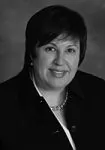On Tuesday, March 24, 2015, the U.S. Supreme Court issued its second decision in substantive trademark law in nearly a decade. B&B Hardware, Inc. v. Hargis Indus., Inc., No. 13-352, slip op., 575 U.S. __ (2015). Sheppard Mullin argued on behalf of the prevailing respondent in the first case, Hana Financial, Inc. v. Hana Bank, decided earlier this year.
In B&B Hardware, the High Court held that findings made by the Trademark Trial and Appeal Board ("TTAB") can have a preclusive effect in subsequent federal court proceedings if the usual requirements of issue preclusion are met, and the issues litigated in the two actions are "materially the same." In so ruling, the Supreme Court has announced that TTAB determinations can be conclusive in subsequent suits to prevent relitigation of the same issues.
The majority opinion delivered by Justice Alito came after an 18-year battle between the parties, initially prompted by Hargis' attempt to register its mark SEALTITE in 1996. B&B opposed Hargis' registration, arguing before the TTAB that Hargis' SEALTITE mark was confusingly similar to B&B's own SEALTIGHT mark, registered in 1993. The TTAB agreed with B&B and denied registration of Hargis' SEALTITE mark based on likelihood of confusion with B&B's SEALTIGHT mark. Despite its right to appeal, Hargis did not seek judicial review of the TTAB's decision in the Federal Circuit or district court.
Likelihood of confusion serves as a basis for a mark to be denied registration and as the test for trademark infringement. As might be expected, in addition to opposing registration of Hargis' SEALTITE mark, B&B also sued Hargis for trademark infringement in district court. However, before the district court ruled on likelihood of confusion, the TTAB announced its finding of likelihood of confusion. B&B then argued to the district court that Hargis could not relitigate the issue of likelihood of confusion because of the preclusive effect of the TTAB's decision. The district court disagreed, noting that the TTAB is not a court of the judiciary.
B&B appealed to the Eighth Circuit, which affirmed on separate grounds, reasoning in part that the issues in the two actions were not the same – the TTAB applies different factors than the Eighth Circuit to evaluate likelihood of confusion. The Supreme Court reversed, stating that the likelihood of confusion standards applied in registration proceedings before the TTAB and infringement suits in federal court are effectively the same for purposes of issue preclusion – the "factors are not fundamentally different" and "minor variations ... do not defeat preclusion." The Supreme Court further stated that even though the TTAB and district courts have different procedures, so long as the TTAB reaches a final decision on the same issue as that before the district court, deference should be given to the TTAB.
Notably, the Supreme Court also recognized cases in which issue preclusion would not apply. Where the TTAB's decision is based on consideration of materially different facts with legal significance, for example, analyzing use of the mark solely based on statements in the registration application as opposed to actual use of the mark in commerce, issue preclusion would not bar relitigation in district court.
In addition, where the usual requirements of issue preclusion are not met, it would not apply. Generally, for an earlier decision to have preclusive effect on a subsequent action, the parties and the issues in the two actions must be the same, and the issue to be precluded from relitigation in the second action must have been actually litigated in the prior action and resolved by a valid final judgment that was essential to the outcome of the earlier action. Perhaps most importantly, in B&B Hardware, Hargis did not appeal the TTAB's finding of likelihood of confusion, rendering the TTAB's decision as essentially a "valid final judgment" capable of having preclusive effect.
Overall, the Supreme Court's decision in B&B Hardware is arguably fairly limited – litigants in dispute before the TTAB can attempt to avoid the preclusive effects of a TTAB decision by seeking a clean slate de novo review of the TTAB decision through an appeal in district court. Moreover, where the TTAB's considerations are not "materially the same" as those before the district court, issue preclusion would not apply. Finally, litigants may opt to proceed directly to district court to sue for infringement and cancellation of a registration simultaneously, and forego the TTAB altogether. Still, parties may spend more time and resources during the registration process and in TTAB proceedings as a result of the B&B Hardware decision, though the Court declared that "[t]his concern does not change our conclusion." In the aftermath of B&B Hardware, trademark owners will need to be more strategic in deciding where and how to assert their trademark claims and protect their trademark rights.
The content of this article is intended to provide a general guide to the subject matter. Specialist advice should be sought about your specific circumstances.

